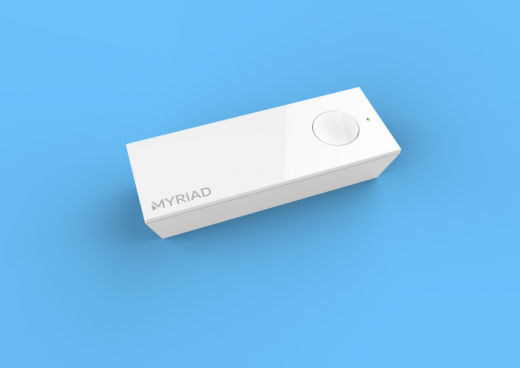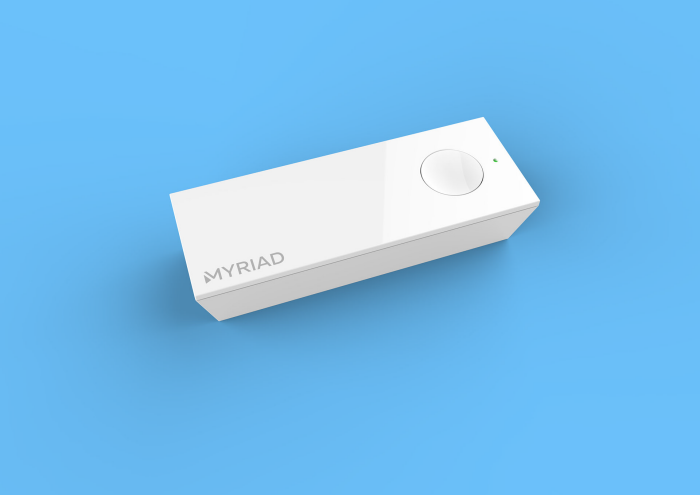Can USSD really make IoT more affordable?
Can USSD really make IoT more affordable?

A use of old technology in a new way is transforming the potential capabilities of IoT.
Myriad Group, a mobile software company that originated in Switzerland in the 1990’s, have created Pressto, a connected bundle built on Myriad’s IoT platform, ThingStream.io.
The device uses the Unstructured Supplementary Service Data (USSD) protocol to send 182 character messages to the Pressto server across cellular networks. Pressto bundles a connected button, GSM connectivity, and management platform in a single package which allows you to focus on building the application that the button press triggers. The press of a button transfers a small payload of information to your application which includes GPS coordinates along with time/date and simple button status information.
What is USSD?
USSD is a protocol used by Global system for Mobile Communications (GSM) cellular telephones to communicate with the service provider’s computers. It can be used to provide independent calling services such as a callback service (to reduce phone charges while roaming), enhance mobile marketing capabilities or interactive data services, people know it most commonly as a means to query a phone’s available credit.
I spoke to Neil Hamilton, VP Business of development at Myriad Group to find out more.
USSD is commonly used for mobile money transfers in developing markets such as Africa, India and Latin America where many people do not possess bank accounts. This application has allowed for payment of utility bills or money transfers. Hamilton explained that:
“If we start thinking about IoT use cases where a device needs to transmit small data payloads (not videos or big files, but kilobytes per day) then we could use the USSD network to do that… We kind of enable a GSM equivalent of a LP-WAN because USSD doesn’t need as much processing power. It also uses far less battery power and therefore devices can be much cheaper when compared to if I’m trying to roll out on LTE where I need more expensive components model to communicate via LTE.”
Myriad Group have established global roaming network access with 600 plus carriers and through the use of supplied embedded sim cards their users can transmit data and submit signals from almost anywhere in the world.
“Then effectively we provide a small code library to whoever is making their devices. And that enables the translation of the data. If it’s a sensor with a motion control we make sure we convert that into a format that we can be transported over USSD. Don’t forget there’s no internet involved. So we kind of spoof an internet language over USSD, our gateway converts that back into internet language and it goes downstream to an application.”
What kind of use cases suit USSD?
The USSD as a conduit for transferring data works particularly well in small, fast moving, remote scenarios such as logistics and tracking, as Hamilton explains:
“Cargo companies work with different end-to-end carriers and they don’t know where cargo is going. if you want to get a heartbeat on a container from almost anywhere, it’s difficult to do. We purchase wholesale connectivity and enable GSM to compete with LPWAN services, business the carriers are missing out on. We don’t want to say ubiquitous service at any time but it’s definitely one where things are remote or moving.”
Agricultural and environmental services companies can be faced the challenge of trying to monitor hectares of farming land or agtech solutions when they’re often near roads that get busy at certain times of day or cell base stations get really and they can’t always have ubiquitous connectivity.
See also: How to turn hardware into IoT by simplifying connectivity?
Hamilton notes that the more they discuss USSD as a data conduit for industrial applications, the more use cases emerge. Today, a number of sensor manufacturers are exploring sensing-as-a- service model. If you’re a high-value sensor manufacturer you typically sell to a distributor who sells to someone who makes something and so on.
“If you start to sell your device completely connected, then it will work anywhere. And then someone could log onto a corresponding app from the sensor manufacturer to then point the data to whatever application you want to deliver it to. It means there are potential opportunities opening up right out on the edge for people to change their markets.”
The Pressto button was originally designed for proof of concept purposes to demonstrate use cases, but it has attracted a surprising amount of interest according to Hamilton but they’ve got more in development:
“We’ve got a very interesting workflow platform coming for how to manage connected devices and that’s where we’re heading now, building up the platform side to offer some more value added and useful services for industrial companies that want to connect up their things.”
The post Can USSD really make IoT more affordable? appeared first on ReadWrite.
(49)



